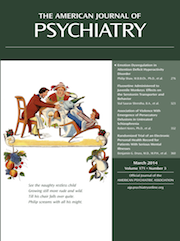Working With Families in Medical Settings: A Multidisciplinary Guide for Psychiatrists and Other Health Professionals
Family therapy is at the top of any list of things psychiatrists know are important and yet avoid. There are many reasons for this. Psychiatry residency requirements mention the need to expose residents to family therapy, but they are vague as to what or how much this exposure should be. Thus, with limited training in family interventions, the average practicing psychiatrist is often reluctant to venture beyond the doctor-patient dyad, citing theoretic stances or confidentiality concerns. This tendency to ignore family members belies common sense, given the degree that most of us depend on our loved ones for both practical and emotional support when we are ill.
This is all the more true for psychosomatic medicine. When consulting in the medical setting, it is not unusual for the psychiatrist to enter a patient’s room and find it filled with family members. And what does the consultant do? Ask them to leave, of course. Which may be reasonable for a first contact, but how often does the psychiatrist take the time to subsequently include the family in the interview process for more than a perfunctory history check?
This book aims to address this practice gap—the gap between what we know we should do and what we actually do—head on.
It is organized in three sections. The first summarizes family theory and research as it pertains to the medical setting. Putting together this section must have been a challenge, given the many studies from various fields that bear on the issue of how a family can influence an individual’s health. The discussion of protective and risk factors is interesting, but most relevant is the review of evidence-based interventions. It can be hard to generalize, as the studies range from the acute (e.g., recovery from coronary artery bypass surgery) to the chronic (e.g., chronic lower back pain), but it seems that regardless of the illness, family interventions help on many levels. Not only do they help coping, but they also improve medical outcomes. The idea that families should be involved in any illness is reinforced by several meta-analyses that show improved mortality rates for patients with diseases such as cardiac illness, stroke, diabetes, or HIV.
The second section looks at various models for involving families in the health care system. One example of an innovative approach is family-centered care, which can be seen as an extension of patient-centered care. This approach includes families in activities such as ward rounds and intensive care treatment planning meetings. It has been adopted by a number of medical centers with various degrees of success, and there is thoughtful consideration of the reasons for success or failure. Other chapters consider specialized interventions for specific situations, for example, helping medical teams deal constructively with disruptive families.
The final section focuses on systems theory, particularly the McMaster approach. In these chapters, the authors describe methods for family systems assessment and then present a stepwise approach to interventions, from simple inclusion to psychoeducation and family systems therapy.
The book does a good job considering both the theoretical and the practical, and it is clearly designed to give the reader useful concepts and skills that can be easily adopted. It is well organized, and each chapter generally begins with a list of the points it will cover and ends with a detailed summary (thus following Carnegie’s advice to tell us what they are going to say, say it, and then tell us what they said). In between, there are many tables and bulleted lists to highlight the major points. These points are further illustrated with excellent case examples.
This book should be required reading for any psychiatrist pursuing a career in psychosomatic medicine. Beyond that, it should be of interest to any mental health care professional treating patients in the medical setting. Given that the future psychiatrist will likely be expected to be a practitioner of collaborative and integrative care, the audience for this book might just include all of us.



